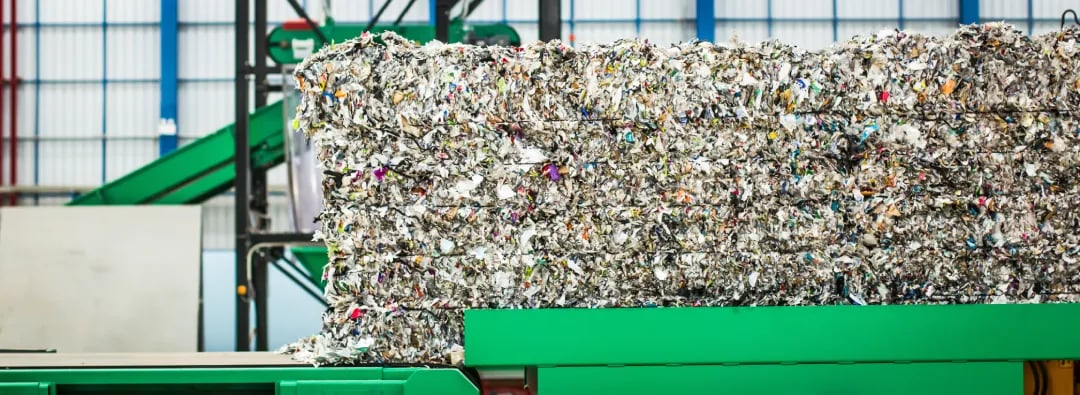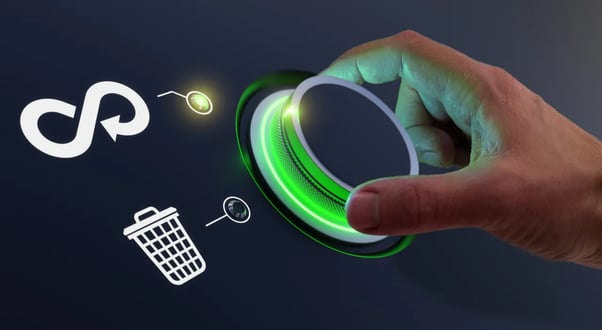
Dealing with waste and generating energy without causing environmental damage are two of the biggest green challenges of our time. Now Imdaad is tackling both by launching an innovative Refuse Derived Fuels plant that turns unrecyclable waste into energy.
Understanding Refuse Derived Fuels (RDF)
Refuse Derived Fuels use waste that would otherwise end up in landfill. These fuels made up of waste that either can’t be recycled economically or can’t be incinerated in its raw form in a safe, non-polluting way.
Dealing with this material is always a challenge for waste management, but the RDF approach helps turn it from a problem into an asset.
The New Farz RDF Plant – An Overview
Imdaad’s new RDF plant is located in its existing FARZ facility in Dubai’s National Industries Park. The FARZ plant deals with 1,200 tonnes of solid waste material every day, much of it mixed municipal waste. Automated sorting and recovery lines identify and remove recyclable and reusable materials such as foil, metals and some plastics. The facility then compresses the remaining unusable material to cut down on space drastically. The separated materials go out to a host of recycling partners.
Previously the unusable material went entirely to landfill which, even when sent in compressed form, was not an ideal or sustainable outcome. With the RDF plant, the landfill requirement is halved on average. This now means that of the 1,200 tonnes of solid waste, approximately 50 percent is reclaimed and recycled, a further 25 percent is turned into RDF, and just 25 percent remains unused.
The Process of Creating RDF
The two keys to producing RDF are extracting the usable materials and turning them into a homogenous format. The first of these tasks involves filtering for materials such as cardboard, labels, some plastics and other corrugated materials. These are usually made up of multiple layers, such that it’s not economically viable to separate them for recycling. However, the individual layers are safe to burn for fuel. The filtering includes magnetization to remove metals and mechanical screening to remove glass, both of which are non-combustible.
The second task is to combine the safely combustible materials into a consistent, uniform substance, namely fuel pellets. This involves a range of techniques including shredding, ballistic separation and pelletization.
The uses of these pellets vary. Imdaad’s RDF will use some of the fuel to power the FARZ facility, making it a perfect example of a circular green economy. The excess fuel can go to commercial partners, for example for use as a replacement to coal and fossil fuels in cement factories.
The Environmental Case for RDF
 While the RDF process is technically intricate, it’s a straightforward concept. So straightforward, in fact, that it’s easy to overlook just how multifaceted its environmental benefits are:
While the RDF process is technically intricate, it’s a straightforward concept. So straightforward, in fact, that it’s easy to overlook just how multifaceted its environmental benefits are:
In Imdaad’s setup, it halves the need for landfill, which uses up one of the most fundamental natural resources: our land.
Less landfill means less emissions in landfill gases, created and released as bacteria breaks down organic material to produce methane and carbon dioxide. The operators of a similar plant in the United Kingdom calculated that every tonne of waste diverted from landfill eliminates the equivalent of 0.54 tonnes of carbon dioxide emissions.
Reducing the landfill load in turn reduces the fuel needed to transport the unusable waste to landfill sites. (While some RDF is transported from FARZ to commercial partners, it is far more efficiently packaged in terms of both weight and space than landfill waste.)
Using the RDF dramatically reduces the need for fossil-derived fuels in sectors such as concrete manufacturing. In some cases, it can even partially or fully replace fossil fuels in electricity production.
Conclusion
Refuse-derived fuels are one of the most important ways of reducing environmental impact thanks to the technology’s dual impact: reducing landfill and reducing the reliance on fossil fuels. It turns waste disposal from a problem into a way of harnessing a fresh asset.
Imdaad has led the way in promoting sustainable practices in Dubai, with the FARZ facility already halving landfill by recovering reusable materials. The RDF facility takes this approach to the next level, further turning potential landfill into environmentally beneficial material.
The immediate impact is clear: waste customers such as municipalities and corporations know their environmental impact is minimized even further, while RDF customers have a new source of environmentally responsible material.
In the longer term, Imdaad hopes to inspire future generations. By using waste material to fuel its own waste management facility, it’s proving that a circular approach really is viable.
To learn more about how Imdaad and Farz can help your business to reduce it’s environmental impact, contact us.

